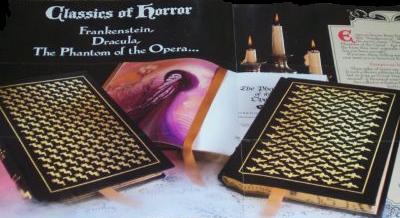
Bram Stoker's Dracula is A Gothic Masterpiece That Transcends Time
Bram Stoker, an Irish author born on November 8, 1847, left an indelible mark on the literary world with his iconic Gothic novel, Dracula. Published in 1897, this tale of horror, mystery, and the supernatural has become synonymous with the vampire genre, influencing countless adaptations and shaping popular culture for over a century. Stoker's life, which spanned the latter half of the 19th century, was marked by a career in the theater and as a business manager for London's Lyceum Theatre, where he worked closely with the renowned actor Sir Henry Irving. His experiences in the theatrical world and his fascination with folklore and Eastern European legends provided fertile ground for the creation of Dracula.
Dracula unfolds through a series of letters, diary entries, and newspaper articles, creating an immersive and epistolary narrative that adds layers of authenticity to the supernatural events that unfold. The novel begins with Jonathan Harker's journey to Transylvania to assist the mysterious Count Dracula with a real estate transaction in England. However, Harker soon realizes that he is a guest in a castle that harbors dark secrets, and he becomes ensnared in a web of horror and malevolence. The titular character, Count Dracula, is a charismatic yet malevolent vampire who seeks to spread the undead curse to England. As the narrative unfolds, readers are introduced to an ensemble cast, including Professor Abraham Van Helsing, Mina Harker, Lucy Westenra, and a group of friends determined to thwart Dracula's sinister plans.
One of the novel's enduring strengths lies in its exploration of Victorian societal norms, fears, and anxieties. Stoker skillfully weaves themes of sexuality, xenophobia, and the clash between modernity and ancient superstitions throughout the narrative. The character of Count Dracula embodies both the allure and terror associated with forbidden desires, making him a complex and enduring figure in literature. Dracula not only set the standard for subsequent vampire literature but also established the conventions of the modern Gothic horror novel. Stoker's atmospheric prose, combined with the epistolary format, creates a sense of immediacy and intimacy that heightens the suspense and dread as the characters confront the supernatural forces at play.
In the dim candlelit chamber of Castle Dracula, a young English solicitor named Jonathan Harker diligently records his harrowing experiences as a guest of the mysterious Count Dracula. The date is May 3rd, and Harker, having journeyed to Transylvania to assist the enigmatic nobleman in a real estate transaction, finds himself increasingly unnerved by the eerie occurrences within the castle's ancient stone walls.
As Harker delves deeper into his host's world, he discovers that Count Dracula is no ordinary aristocrat. The Transylvanian nobleman exudes an otherworldly charm, coupled with an unsettling demeanor that becomes more apparent with each passing day. Strange visions, nocturnal activities, and encounters with cryptic, supernatural entities heighten Harker's unease, leaving him trapped in a nightmarish labyrinth.
Meanwhile, in England, Harker's fiancée, Mina, awaits his return, unaware of the malevolent force that has been unleashed. Mina's friend Lucy Westenra, charming and vivacious, falls prey to a mysterious illness that baffles her suitors and alarms her closest confidante, Professor Abraham Van Helsing. The professor, a polymath with a keen interest in obscure diseases and folklore, senses a darkness creeping over Lucy's life and embarks on a quest to unravel the mysteries surrounding her ailment.
As Harker struggles to escape the clutches of Castle Dracula, the insidious influence of the vampiric count spreads to England. Lucy's transformation into an undead creature marks the beginning of a sinister campaign by Count Dracula to conquer new territory and spread the curse of the undead.
A group of intrepid individuals, including Harker upon his return to England, Van Helsing, and Lucy's former suitors, unite to confront the ancient evil that has descended upon them. Together, they embark on a perilous journey to thwart the machinations of Count Dracula and free Lucy's soul from the clutches of the undead.
The narrative unfolds through a series of letters, diary entries, and newspaper articles, offering a firsthand account of the escalating horrors and the collective efforts to combat the vampiric threat. As the characters confront the supernatural forces at play, "Dracula" delves into themes of forbidden desires, Victorian sexual anxieties, and the clash between modernity and ancient superstitions.
Over the years, Dracula has been adapted into numerous films, television series, and stage productions, cementing its status as a cultural touchstone. The vampire mythos introduced by Stoker has evolved and expanded, becoming a rich and dynamic genre that continues to captivate audiences. Bram Stoker's Dracula stands as a testament to the enduring power of Gothic literature. Its legacy extends far beyond the initial shock and fascination it elicited in Victorian readers, remaining a source of inspiration for writers, filmmakers, and artists who continue to explore the eternal themes of life, death, and the supernatural.
Bram Stoker's Dracula is a chilling tale that weaves together elements of horror, romance, and Gothic suspense. The novel's atmospheric prose and epistolary format create a sense of immediacy, drawing readers into a world where the boundary between the living and the undead is blurred, and the struggle for survival takes on a supernatural dimension.
Bram Stoker's Immortal Vampire Classic in a Breathtaking Illustrated Edition - Limited to just 1,200 hand-numbered copies.
Bram Stoker's Immortal Vampire Classic in a Breathtaking Illustrated Edition - Limited to just 1,200 hand-numbered copies.pic.twitter.com/dORhDAhwzc— Easton Press Books (@Easton_Press) July 2, 2019
Comments
Post a Comment
Share your best book review and recommendation